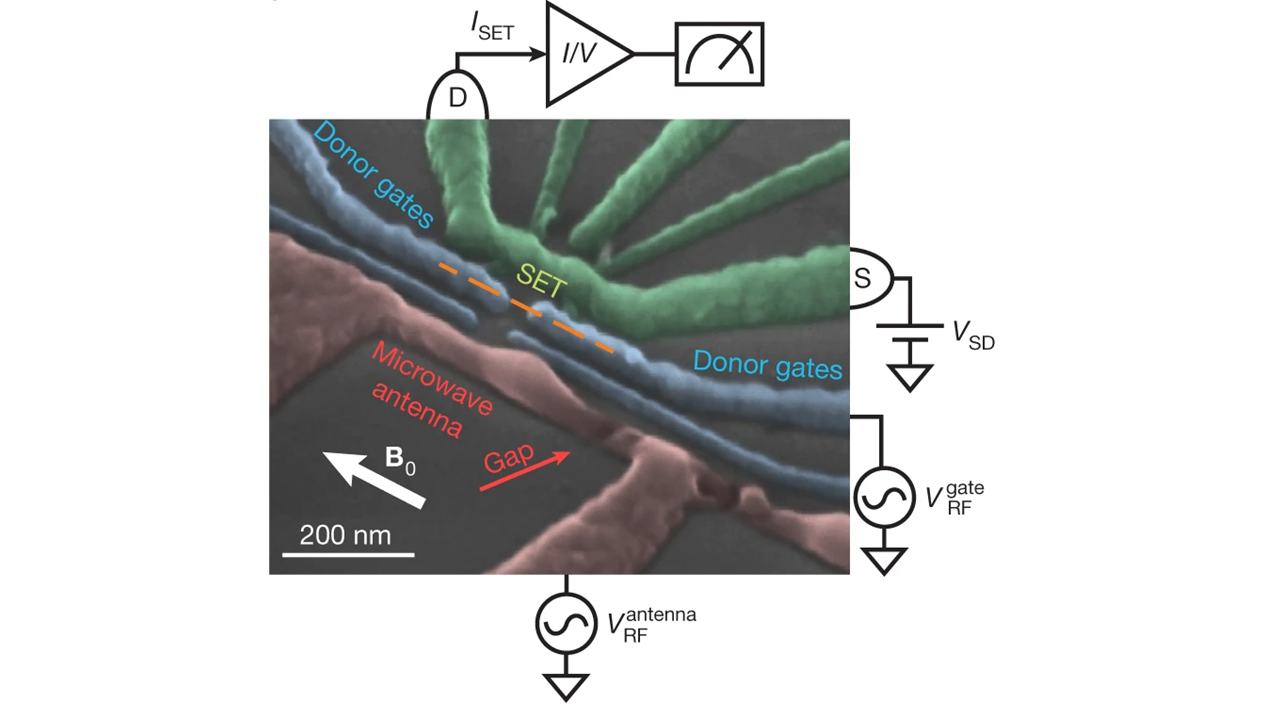Coherent electrical control of a single high-spin nucleus in silicon

Title: Coherent electrical control of a single high-spin nucleus in silicon
Authors: Serwan Asaad, Vincent Mourik, Benjamin Joecker, Mark A.I. Johnson, Andrew D. Baczewski, Hannes R. Firgau, Mateusz T. Mądzik, Vivien Schmitt, Jarryd J. Pla, Fay E. Hudson, Kohei M. Itoh, Jeffrey C. McCallum, Andrew S. Dzurak, Arne Laucht, Andrea Morello
Journal: Nature, 579(7798):205-209 (2020)
DOI: 10.1038/s41586-020-2057-7
Abstract:
Nuclear spins are highly coherent quantum objects. In large ensembles, their control and detection via magnetic resonance is widely exploited, for example, in chemistry, medicine, materials science and mining. Nuclear spins also featured in early proposals for solid-state quantum computers1 and demonstrations of quantum search2 and factoring3 algorithms. Scaling up such concepts requires controlling individual nuclei, which can be detected when coupled to an electron4,5,6. However, the need to address the nuclei via oscillating magnetic fields complicates their integration in multi-spin nanoscale devices, because the field cannot be localized or screened. Control via electric fields would resolve this problem, but previous methods7,8,9 relied on transducing electric signals into magnetic fields via the electron-nuclear hyperfine interaction, which severely affects nuclear coherence. Here we demonstrate the coherent quantum control of a single 123Sb (spin-7/2) nucleus using localized electric fields produced within a silicon nanoelectronic device. The method exploits an idea proposed in 196110 but not previously realized experimentally with a single nucleus. Our results are quantitatively supported by a microscopic theoretical model that reveals how the purely electrical modulation of the nuclear electric quadrupole interaction results in coherent nuclear spin transitions that are uniquely addressable owing to lattice strain. The spin dephasing time, 0.1 seconds, is orders of magnitude longer than those obtained by methods that require a coupled electron spin to achieve electrical driving. These results show that high-spin quadrupolar nuclei could be deployed as chaotic models, strain sensors and hybrid spin-mechanical quantum systems using all-electrical controls. Integrating electrically controllable nuclei with quantum dots11,12 could pave the way to scalable, nuclear- and electron-spin-based quantum computers in silicon that operate without the need for oscillating magnetic fields.
Related Articles:





